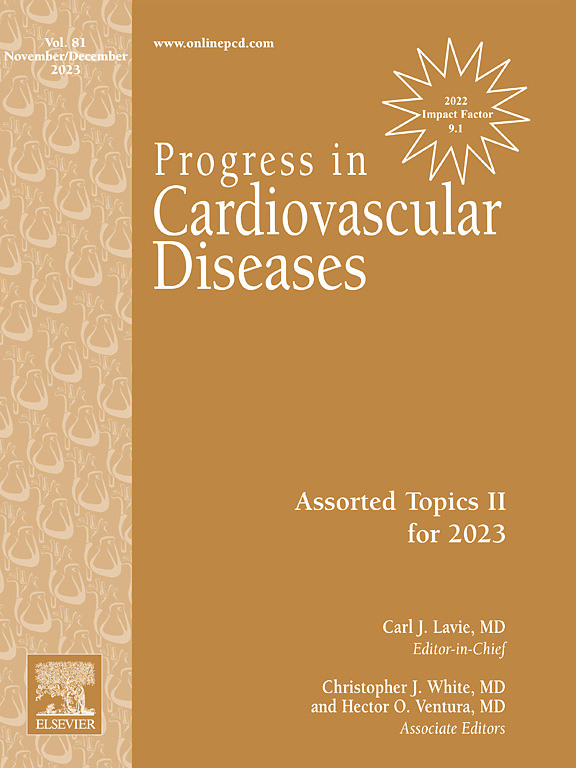Association of neighborhood median income to outcomes in hypertrophic cardiomyopathy
IF 7.6
2区 医学
Q1 CARDIAC & CARDIOVASCULAR SYSTEMS
引用次数: 0
Abstract
Background
Neighborhood median household income (NMHI), a key social determinant of health, is being recognized as a major source of inequity in healthcare. Its impact on patients with hypertrophic cardiomyopathy (HCM) is uncertain.
Objective
We sought to study the association between NMHI and long-term outcomes of HCM patients.
Methods
This was an observation registry of 6368 HCM patients (median age 56 years, 58 % men, 83 % white, 32 % with ≥1 sudden death risk factor) who underwent a clinical evaluation at a tertiary care center between 2002 and 18. NMHI (US$) was calculated from each patient's zip code, using data from the US Census Bureau and Department of Housing & Urban Development. The primary outcome was death, appropriate internal cardioverter defibrillator (ICD) discharge or heart transplant in follow up.
Results
Patients were categorized as obstructive (oHCM, n = 3827 or 60 %, 65 % symptomatic, median NMHI $51,600) and nonobstructive (nHCM, n = 2541 or 40 %, 73 % asymptomatic, median NMHI $53,700) using echocardiography. At a median of 6 years (interquartile range or IQR 2.91, 9.74), there were 998 (16 %) primary events (deaths = 939), with breakdown as follows: 599/3827 (16 %) in oHCM and 399/2541 (16 %) in nHCM, respectively. On multivariable Cox survival analysis, a higher NMHI was independently associated with improved long-term freedom from primary events (oHCM [Hazard ratio or HR 0.84 95 % Confidence Interval or CI 0.80–0.88] and nHCM [HR 0.95 95 % CI 0.91–9.97]), both p < 0.01. On penalized spline analysis, the NMHI at which the hazard for primary events crossed 1 was ∼$52,000 for both oHCM and nHCM. In nHCM patients, NMHI greater than $52,000 was associated with improved longer-term freedom from primary events vs. those whose NMHI was lower than $52,000 (196/1398 [14 %] vs. 203/1143 [18 %], log-rank p-value<0.01). Similarly, oHCM patients with NMHI greater than $52,000 had significantly improved longer-term freedom from primary events vs. those whose NMHI was lower than $52,000 (186/2067 [9 %] vs. 413/1760 [23 %] vs., log-rank p-value<0.001).
Conclusions
NMHI, a marker of socioeconomic status, is independently associated with outcomes in patients with HCM. oHCM patients below the NMHI cutoff had significantly worse long-term outcomes vs. the nHCM patients similarly below the NMHI cutoff.
社区中等收入与肥厚性心肌病预后的关系。
背景:社区家庭收入中位数(NMHI)是健康的一个关键社会决定因素,正被认为是卫生保健不公平的一个主要来源。它对肥厚性心肌病(HCM)患者的影响尚不确定。目的:我们试图研究NMHI与HCM患者长期预后之间的关系。方法:这是对6368例HCM患者(中位年龄56 岁,58% %男性,83% %白人,32% %具有≥1个猝死风险因素)的观察登记,这些患者在2002年至2018年期间在三级保健中心接受了临床评估。NMHI(美元)是根据每个患者的邮政编码计算的,使用的数据来自美国人口普查局和住房与城市发展部。主要结局为死亡、适当的内转复除颤器(ICD)出院或心脏移植。结果:超声心动图将患者分为梗阻性(oHCM, n = 3827或60 %,65 %有症状,NMHI中位数51,600美元)和非梗阻性(nHCM, n = 2541或40 %,73 %无症状,NMHI中位数53,700美元)。在中位数为6 年(四分位间距或IQR为2.91,9.74)时,有998例(16 %)主要事件(死亡 = 939),细分如下:oHCM为599/3827(16 %),nHCM为399/2541(16 %)。在多变量Cox生存分析中,较高的NMHI与改善长期免于原发事件的独立相关(oHCM[风险比或HR 0.84 95 %可信区间或CI 0.80-0.88]和nHCM [HR 0.95 95 % CI 0.91-9.97]),均为p 结论:NMHI是社会经济地位的标志,与HCM患者的预后独立相关。低于NMHI临界值的oHCM患者与低于NMHI临界值的nHCM患者相比,其长期预后明显更差。
本文章由计算机程序翻译,如有差异,请以英文原文为准。
求助全文
约1分钟内获得全文
求助全文
来源期刊

Progress in cardiovascular diseases
医学-心血管系统
CiteScore
10.90
自引率
6.60%
发文量
98
审稿时长
7 days
期刊介绍:
Progress in Cardiovascular Diseases provides comprehensive coverage of a single topic related to heart and circulatory disorders in each issue. Some issues include special articles, definitive reviews that capture the state of the art in the management of particular clinical problems in cardiology.
 求助内容:
求助内容: 应助结果提醒方式:
应助结果提醒方式:


